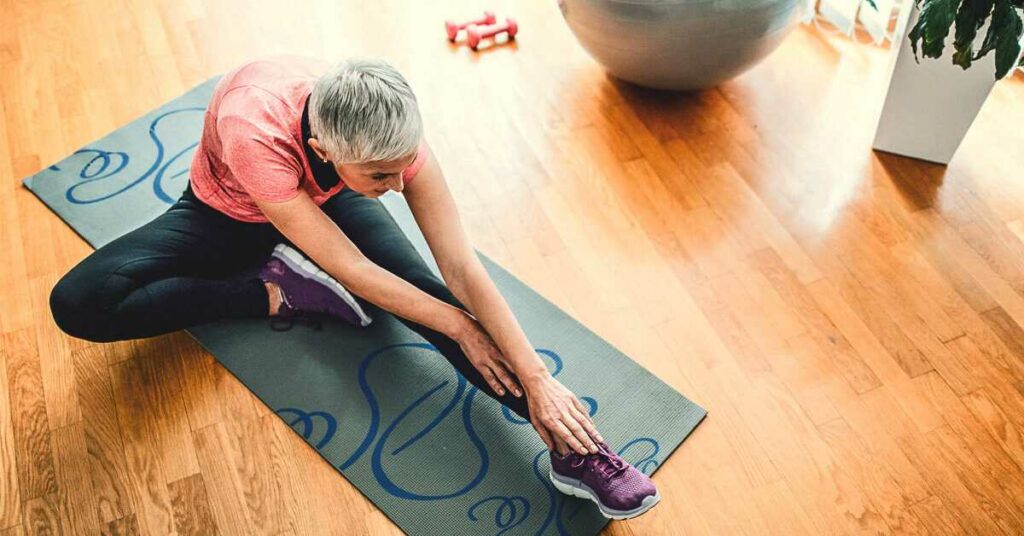If you are one of the millions who suffer from knee arthritis, you know just how debilitating it can be. Not only is it painful, but it can also make it difficult to do everyday activities. If you are looking for relief, physical therapy may be your answer. This blog post will discuss 10 examples of physical therapy treatments for knee arthritis. Keep reading to learn more!
Contents
What Is Knee Arthritis?
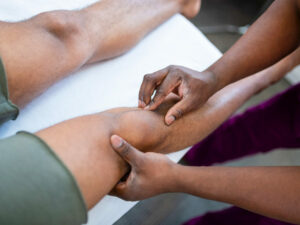 Knee arthritis is a condition that causes the breakdown of cartilage in the knee joint. Cartilage is a firm, rubbery tissue that cushions the ends of bones in the joints. The main symptom of knee arthritis is pain and stiffness in the knee.
Knee arthritis is a condition that causes the breakdown of cartilage in the knee joint. Cartilage is a firm, rubbery tissue that cushions the ends of bones in the joints. The main symptom of knee arthritis is pain and stiffness in the knee.
There are two main types of arthritis that can affect the knee: osteoarthritis and rheumatoid arthritis. Osteoarthritis is the most common type of arthritis, and it usually affects people over the age of 50. Rheumatoid arthritis is less common, but it can occur at any age.
There are many different treatments for knee arthritis, including medication, weight loss, exercise, and surgery. Physical therapy is another treatment option that can help relieve pain and improve function. If you want to try physical therapy for your knee arthritis, here are 10 exercises that can help. Keep reading on!
What Are Some Physical Therapy For Knee Arthritis?
When it comes to physical therapy for knee arthritis, there are a number of different exercises and treatments that can be used in order to help improve the condition. While some people may opt for medication or even surgery, others may find that physical therapy is a better option. Here are the top 10 physical therapy examples for knee arthritis that can help improve the condition:
Strengthening Exercises
It is important to strengthen the muscles around the knee joint in order to take some of the pressure off of the joint itself. There are a number of different strengthening exercises that can be done, and your physical therapist can help you choose the best ones for your situation. Some common strengthening exercises include:
- Quadriceps sets: Sit in a chair with your knees bent to about 90 degrees. Tighten the muscles in the front of your thigh and hold for 5-10 seconds. Repeat 10 times.
- Hamstring curls: Lie on your back with a towel looped around your foot. Keeping your leg straight, use your hamstring muscle to lift your foot towards your buttock. Repeat 10 times.
- Step-ups: Place your foot on a step in front of you and press down, straightening your leg to raise your body up. Step back down with the other foot. Repeat 10 times.
Balance Exercises
 This is one of the most common forms of physical therapy for knee arthritis. The main goal of balance exercises is to help you maintain your balance and prevent falls. These exercises can also help improve your coordination and muscle strength. For example, when you are doing a balancing exercise, you may be asked to stand on one leg or walk heel-to-toe. A few common balance exercises for knee arthritis might include:
This is one of the most common forms of physical therapy for knee arthritis. The main goal of balance exercises is to help you maintain your balance and prevent falls. These exercises can also help improve your coordination and muscle strength. For example, when you are doing a balancing exercise, you may be asked to stand on one leg or walk heel-to-toe. A few common balance exercises for knee arthritis might include:
- Heel-to-toe walking: Put a piece of tape on the floor to create a line. Start by standing with your heels touching one end of the line and your toes touching the other end. Walk forward, placing your heel directly in front of your toe with each step. Try to keep your balance and don’t let your heel touch the floor until you have reached the end of the line.
- Standing on one leg: Start by standing up straight with your feet shoulder-width apart. Slowly lift one foot off of the ground and hold it in the air for 10 seconds. Then, lower your foot back to the ground and repeat with the other leg.
Endurance Exercises
Endurance exercises are often a type of aerobic activity. This means that they increase your heart rate and make you breathe harder. They help to strengthen your muscles and improve your cardiovascular fitness. Endurance exercises can also help to reduce pain and stiffness in your joints.
Walking is a great endurance exercise for people with knee arthritis. Start by walking for 10 minutes a day, and then gradually increase the amount of time that you walk each day. You can also try swimming or biking for an endurance workout.
Flexibility Exercises
This type of physical therapy involves a series of exercises designed to improve the range of motion in your knee joint. The therapist will start with some simple, passive movements and progress to more active exercises as your range of motion improves. It is important to do these exercises regularly to maintain the gains you make.
A few examples of flexibility exercises for knee arthritis are:
- Heel slides: Sit on the edge of a chair with your knees bent to 90 degrees. Slowly straighten your affected leg until your heel slides along the floor. Return to the starting position and repeat 10 times.
- Hamstring stretches: Lie on your back with both legs extended. Loop a towel around your affected foot and gently pull your leg toward your chest. You should feel a stretch in the back of your thigh. Hold for 30 seconds and repeat three times.
Aquatic Therapy
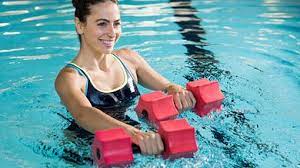 It can be very beneficial to do physical therapy for knee arthritis in water because the water provides resistance for you to work against. The water can also help to support your body weight, which can take some of the pressure off of your joints. For example, you can do things like water walking, cycling, and even swimming to help improve the range of motion in your knee joint.
It can be very beneficial to do physical therapy for knee arthritis in water because the water provides resistance for you to work against. The water can also help to support your body weight, which can take some of the pressure off of your joints. For example, you can do things like water walking, cycling, and even swimming to help improve the range of motion in your knee joint.
Massage Therapy
For arthritis of the knee, massage therapy can help improve the range of motion, reduce pain and swelling, and improve the quality of your sleep. Massage therapists use a variety of techniques to achieve these benefits. Massage therapies help in two ways.
First, by directly affecting the muscles and joints, they can help reduce pain and improve range of motion. Second, massage can help relax the body, which can reduce stress and promote healing. So do consider this type of physical therapy for knee arthritis.
Joint Mobilization
As one of the most common physical therapy interventions for knee arthritis, joint mobilization is a manual technique employed by your therapist to increase the range of motion. The therapist may use their hands to apply pressure and move your joints in specific directions. It works by breaking up adhesions in the joint capsule that may have formed due to arthritis.
For example, if someone has arthritis in their right knee, the therapist may place their left hand on the patient’s thigh and use their right hand to hold the ankle and move the foot into different positions. This can help to loosen the joint and reduce pain.
Electrical Stimulation
This is a therapy that uses electrical currents to stimulate the nerves and muscles in order to reduce pain. It is often used in conjunction with other forms of physical therapy. During the treatment, the patient will feel a tingling sensation. Because it can be uncomfortable for some people, the therapist will start with a lower setting and slowly increase the intensity if needed.
Ultrasound Therapy
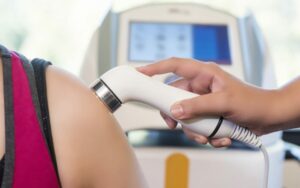 This type of therapy is commonly used to treat various types of musculoskeletal conditions, including knee arthritis. Ultrasound therapy uses sound waves to penetrate deep into the tissue and help reduce inflammation. For example, a 2008 study found that ultrasound therapy was effective in reducing pain and improving function in people with knee arthritis. It is very important to consult with your doctor or physical therapist before starting this type of therapy.
This type of therapy is commonly used to treat various types of musculoskeletal conditions, including knee arthritis. Ultrasound therapy uses sound waves to penetrate deep into the tissue and help reduce inflammation. For example, a 2008 study found that ultrasound therapy was effective in reducing pain and improving function in people with knee arthritis. It is very important to consult with your doctor or physical therapist before starting this type of therapy.
Heat or Cold Therapy
Finally, an option of physical therapy for knee arthritis that does not require any equipment is heat or cold therapy. This can be done by simply using a heating pad or ice pack on the sore area for around 20 minutes at a time. Heat therapy helps to increase blood flow and loosen up muscles, while cold therapy numbs the area and decreases inflammation.
In fact, heat or cold therapy is very general and can be used for many different types of arthritis and joint pain. However, it is always best to consult with a physical therapist or doctor before using this method, as there are certain precautions that need to be taken, such as not putting ice directly on the skin.
Depending on the severity of arthritis, some of these physical therapy examples may be more appropriate than others. Overall, these examples of physical therapy show that there are a number of ways to help ease the pain and stiffness associated with this condition. It is best to consult with a physical therapist to find out which exercises and methods will work best for you.
What Are Some Benefits Of Physical Therapy?
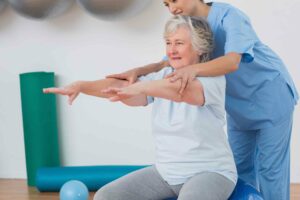 There are several benefits that you can enjoy with physical therapy. These include:
There are several benefits that you can enjoy with physical therapy. These include:
- Relief From Joint Pain: Many people who suffer from knee arthritis find that physical therapy provides relief from the pain and discomfort associated with this condition.
- Increased Range Of Motion: One of the goals of physical therapy is to help you increase your range of motion. This is important because it can help you regain some of the mobility that you may have lost due to arthritis.
- Stronger Muscles: Another benefit of physical therapy is that it can help to build up the muscles around the joint. This is important because stronger muscles can help to take some of the pressure off of the joint and prevent further damage.
- Improved Balance: Many people who suffer from knee arthritis also have problems with balance. Physical therapy can help to improve your balance and prevent falls.
- Better Coordination: The exercises that you will do during physical therapy can also help to improve your coordination. This is important because it can help you perform activities of daily living more easily and prevent accidents.
- Less Fatigue: People with knee arthritis often find that they are very fatigued. It can help to reduce fatigue by improving your overall fitness level.
- Better Sleep: Physical therapy can help to improve your sleep by teaching you how to relax and by reducing pain.
- Improved Quality Of Life: When all of the above benefits are combined, they can lead to an improved quality of life. This is because you will be able to do more of the things that you enjoy and you will be less likely to suffer from pain and fatigue.
So, you can see the benefits of physical therapy for your condition. You should talk to your doctor about whether physical therapy is right for you. And if so, ask for a referral to a physical therapist.
What Are Some Concerns And Limitations?
Although many studies have found that physical therapy can be helpful for people with knee arthritis, there is still much that is unknown about the best way to treat this condition. More research is needed to determine the most effective exercises, stretches, and other interventions for people with knee arthritis.
Moreover, there are some concerns and limitations that you need to be aware of, these include:
- First, it is important to understand that physical therapy can help to improve your symptoms and reduce your pain. But not a complete cure for your condition.
- Second, you need to be sure to consult with your doctor before beginning any physical therapy program. This is because some exercises and stretches may not be appropriate for your particular condition.
- Third, you may need to see a physical therapist for several weeks or even months before you start to see any improvements in your symptoms.
- Finally, it is important to keep in mind that physical therapy is not a quick fix. You will need to commit to a regular exercise routine in order to see the long-term benefits of physical therapy for knee arthritis.
So, these are just a few of the things to keep in mind as you consider beginning physical therapy for knee arthritis. But if you are willing to put in the time and effort, physical therapy can be a helpful treatment option for you. You just need to find what works best for you. And be patient as you see improvements in your symptoms over time.
Conclusion
In conclusion, physical therapy for knee arthritis can be very helpful in reducing pain and improving function. There are many different techniques that can be used, so it is important to work with a physical therapist to find the best approach for you. Physical therapy can be combined with other treatments, such as medication or surgery, to provide the best possible care for knee arthritis.
Physical Therapy help patients recover from pain. If you’re experiencing Back pain, Shoulder pain, Knee pain, Neck pain, Elbow pain, Hip pain, or Arthritis pain, a physical therapist at MantraCare can help: Book a physiotherapy session.
